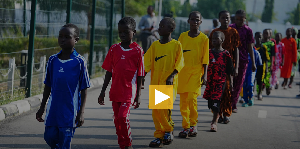According to a press release, the International Monetary Fund (IMF) has approved a three-year arrangement under the Poverty Reduction and Growth Facility (PRGF) for Ghana of an amount of $602.6 million to support the government's economic program to tackle macroeconomic instability. The approval will enable an initial disbursement $105.2 million, immediately.
Finance Minister Kwabena Duffuor has made a lot of positive noises about this loan, which will certainly help the country to stabilise its local currency and perhaps help with its exports, too. But, what the government of acclaimed ˜social democrats have refused to tell Ghanaians is that the average Ghanaian is going to have to pay more for this loan.
There are strict conditionalities attached to this facility. Simply put, petrol, water and electricity prices are going to shoot up and any trace of subsidy removed, whether it is for the poor or average family. The IMF document reads, “The [Ghanaian] authorities’ planned reduction of the budget deficit to 4½ percent of GDP in 2011, and below this level in subsequent years, will be critical to restoring public debt sustainability. To help achieve this fiscal goal, the authorities should ensure that petroleum pricing and utility tariffs allow for full cost recovery to avoid large subsidy costs. More effective control will also be needed over the public sector wage bill, and steps should be taken to modernize the tax regime and strengthen collection. Although, Ghana’s fiscal deficit is not more than 11%, the Mills administration, in its eagerness to paint the NPP irresponsible, has ‘cleverly’ deducted divestiture receipts from the deficit and presented it as first 14.9% and recently revised downwards to 14.5%.
This has enabled the World Bank and IMF to also use that inflated figure to demand the kind of drastic cuts that go against the natural programmes of a social democratic party.
This is what the IMF document says: “Ghana’s macroeconomic conditions deteriorated substantially during 2008, reflecting global shocks to food and fuel prices and highly expansionary fiscal policies, in particular in the run-up to the elections. Inflation rose to about 20 percent and the current account deficit widened appreciably, putting pressure on Ghana’s international reserves and the exchange rate. Growth is projected to moderate in 2009, with potential additional downside risks stemming from the global recession.â€
It continues, “The authorities’ economic adjustment program appropriately centers on efforts to re-establish macroeconomic stability. The budget deficit target of 9.4 percent of GDP in 2009, down from 14.5 percent in 2008, is appropriately ambitious. In light of the limited scope for countercyclical fiscal policy in Ghana, the authorities stand ready to take additional measures to achieve their deficit targets in the event of revenue shortfalls.â€
When Eugene Arhin of the Danquah Institute was contacted, he expressed sadness that “when a doctor makes the wrong diagnoses it is difficult to prescribe the right medication for an effective cure.
He added, “Ironically, in getting the NDC government to cut down the deficit, the IMF and World Bank have demanded that 50 percent of subvented agencies must be rationalised, commercialised and privatised. And, proceeds from divestiture to be used to bring down the deficit! Yet, receipts from divestiture in 2008 are not added to measure the full size of the very deficit that the programme is being designed to bring down!â€
General News of Sunday, 19 July 2009
Source: The Statesman












